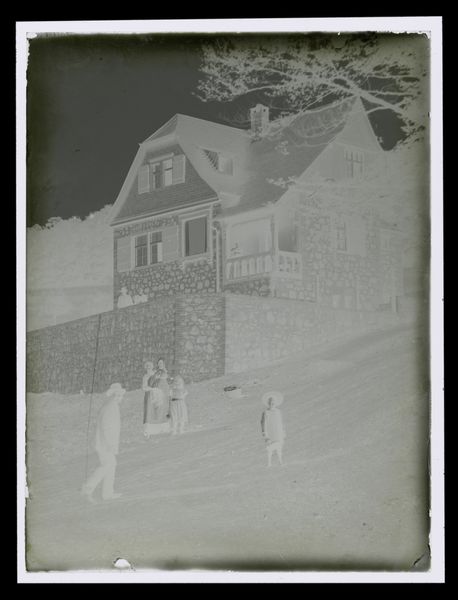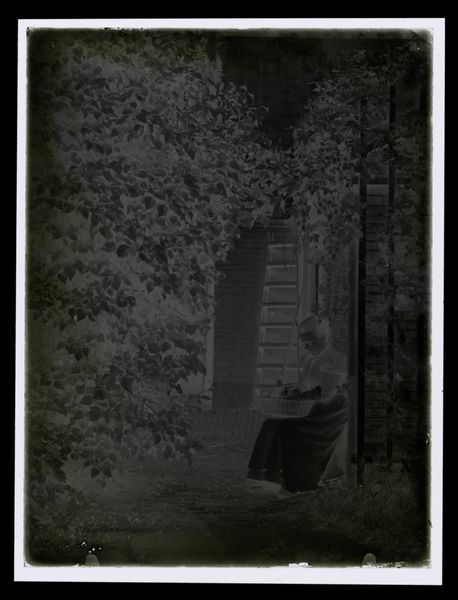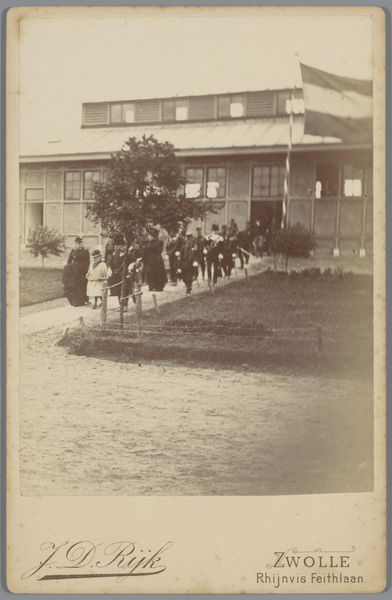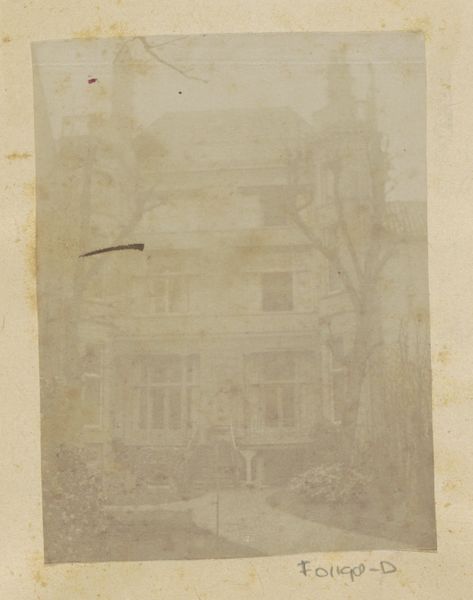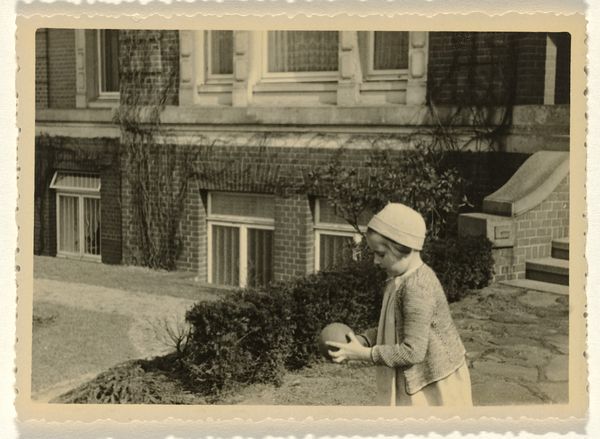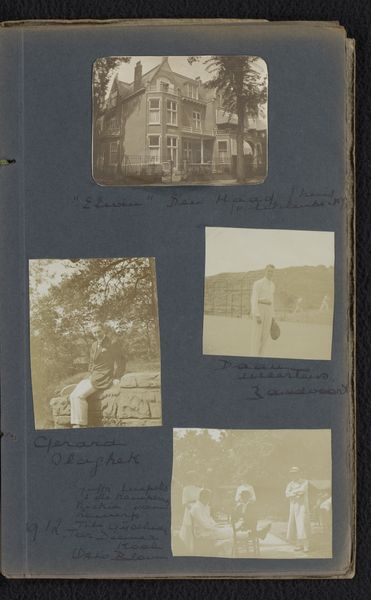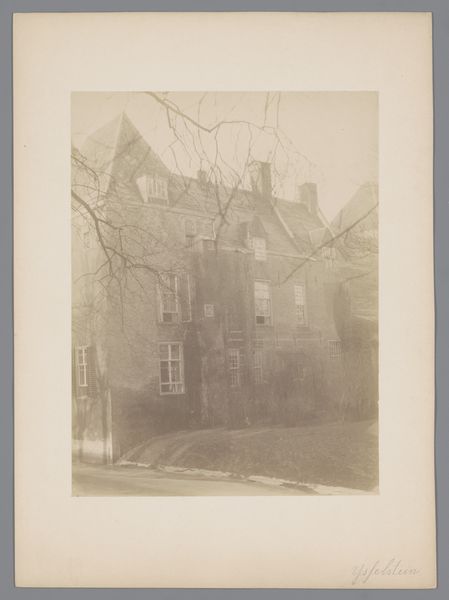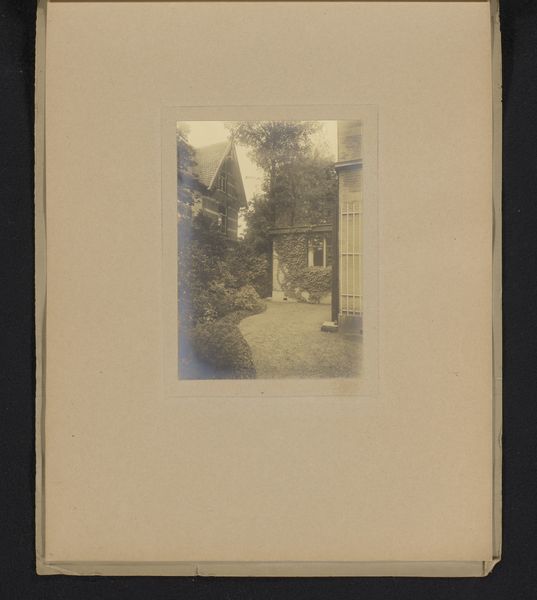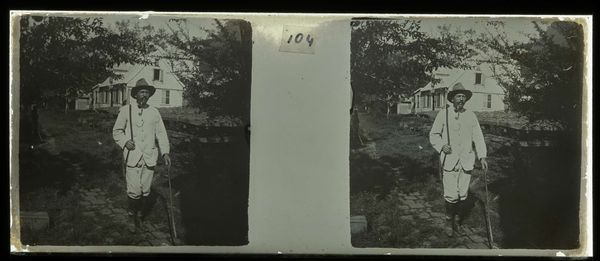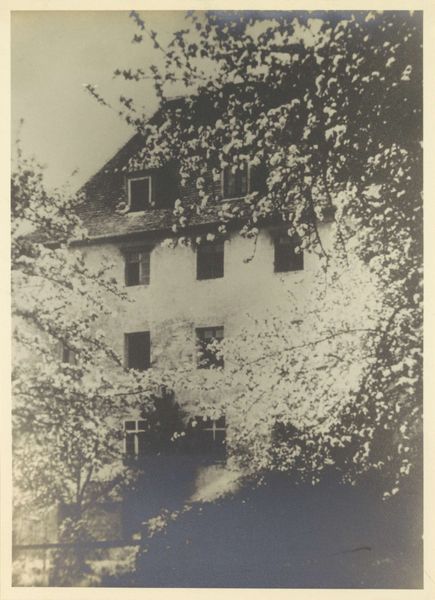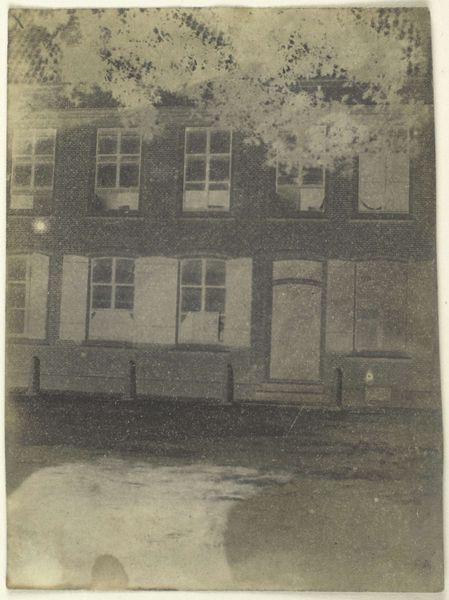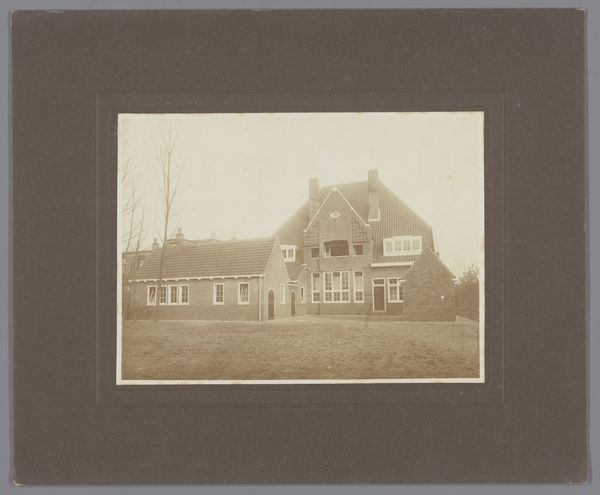
Twee meisjes met twee kinderen voor een huis, mogelijk in Erbach c. 1865 - 1900
0:00
0:00
photography, gelatin-silver-print
#
portrait
#
landscape
#
photography
#
gelatin-silver-print
#
genre-painting
Dimensions: height 119 mm, width 90 mm
Copyright: Rijks Museum: Open Domain
Curator: This gelatin silver print, created between 1865 and 1900, is entitled "Two Girls with Two Children in front of a House, possibly in Erbach," by Laurens Lodewijk Kleijn. It offers a fascinating snapshot of domestic life. Editor: It’s incredibly haunting. The stark contrasts of the negative make the scene feel ghostly and almost surreal. There's an immediate sense of displacement and unease for me. Curator: Displacement is a good word for it. Viewing it through the lens of the 19th century, one must acknowledge the restrictive roles assigned to women and children in that period, the limits imposed by domestic life in Erbach or anywhere else. Consider what these girls represent in terms of societal expectations versus individual freedoms. Editor: The house looms large, doesn’t it? A monolithic structure presiding over the girls. Symbolically, the home can represent safety and belonging, but here, the way it dwarfs the figures suggests entrapment, as though they're fixed there. It’s an oppressive feeling. Curator: Yes, the photographic composition, which includes elements of landscape, also brings into question themes like property, privilege and the rootedness of families in specific locales—all of which were entangled with power dynamics during the time. Notice how the landscape, in tandem with the architectural design of the house, emphasizes status and class? Editor: And I'm also drawn to their attire—especially that of the two older girls, their solemn and slightly older posture... There’s a somber mood, as if they're caught between childhood innocence and the responsibilities looming ahead as adult women. Are the dark clothes reflective of mourning traditions perhaps, or simply the conventions of posing for such portraits at that time? Curator: Indeed, clothing holds significant symbolic weight, communicating social standing, occasion, even affiliation. Your mention of possible mourning traditions is apt; in these early photographs, the subjects frequently wear their best, regardless of how joyful their current life actually is. Editor: This image provokes a kind of silent dialogue—what weren’t they saying with these carefully constructed representations? This work pushes us to investigate beyond the image’s surface. Curator: Precisely, and situates it not as just a picturesque genre-painting scene but as a point of intersection for deeper reflection.
Comments
No comments
Be the first to comment and join the conversation on the ultimate creative platform.
